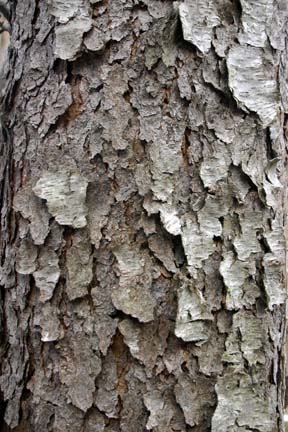
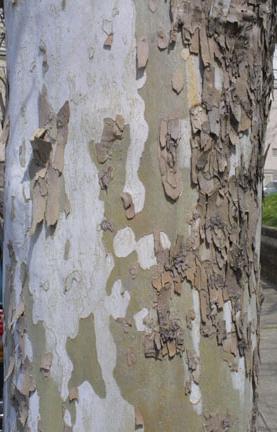
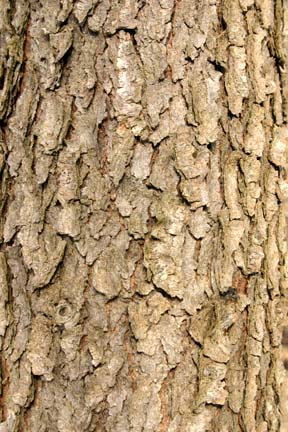
BARK & CORK
by Grandpa Cliff Oct 20, 2005
A tree can often be identified by its bark, because bark looks different on different trees.



Black Cherry Sycamore Red Maple

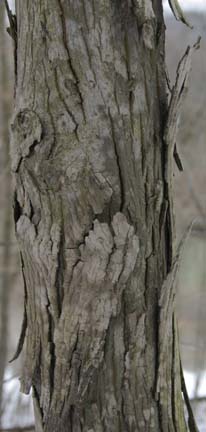
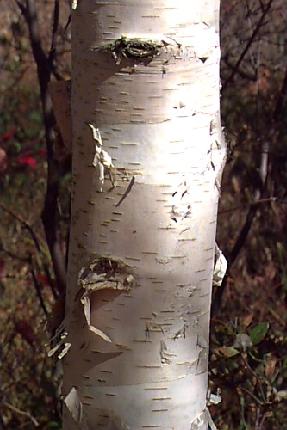
Cottonwood (with vine) Shagbark Hickory Birch
What Does the Bark on a Tree Do?
1) It keeps water from escaping as it passes up through the sapwood from the roots.
2) Phloem (FLOW-em), the inner bark, carries sugar from the leaves down to the roots and other parts of the tree. The sugar is dissolved in water.
3) The bark also prevents the water in the phloem from getting out the side of the trunk and branches.
4) The bark prevents insects and diseases from getting into the tree and harming it.
CROSS-SECTION OF A THREE YEAR OLD BASSWOOD STEM
[Grades 6-8 can ignore this section]
A very thin slice of a woody stem can be made for study under a microscope (see next image). Dyes of various colors are put on the thin slice. Some kinds of cells absorb one color of dye, and other kinds of cells aborb other colors. That helps scientists identify the various parts of the stem. Basswood is a kind of tree.
_________________________________________________________________________________________________
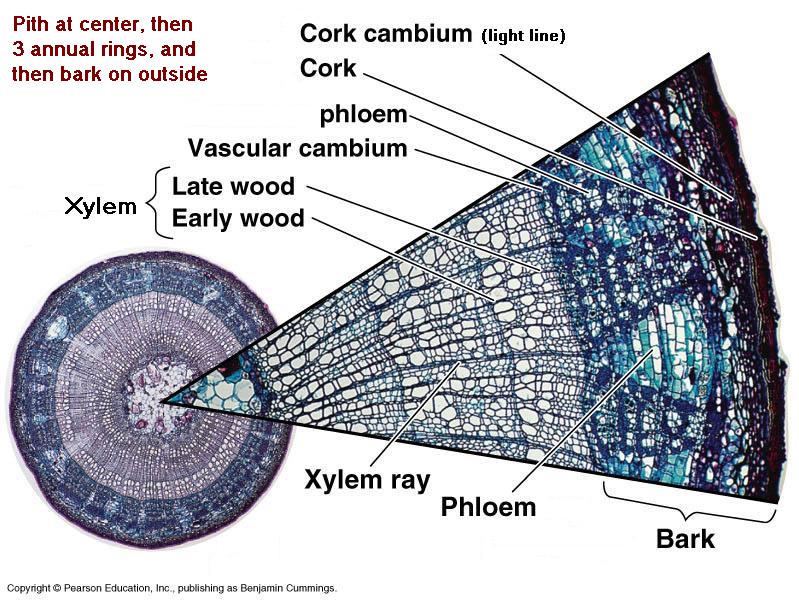
_________________________________________________________________________________________________
Early Wood is the same as Spring Wood. Late Wood is the same as Summer Wood.
A new layer of phloem (dark blue) grows each year, just as it does in the sapwood. As the stem grows bigger around, each phloem layer splits. New phloem (light blue) fills in the breaks.
How Does the Bark Keep the Water in the Tree?
If you lean against a tree, you will be touching the layer of the bark called the Cork, which is a waterproof material that won't let the tree's water escape through it. As a tree grows bigger around, the bark often cracks (because it can't stretch to the larger size). A special layer of cells (called the Cork Cambium) has to make new cork to fill in between the broken cork so that the tree's water doesn't get out. Inside the cork and cork cambium is the phloem (FLOW-em) which carries the dissolved sugar from the leaves down to the roots. As you can see, the tree cannot live without a healthy bark.
CORK
In almost all trees, the cork layer is very thin, but in the Cork Oak which grows in Portugal it gets very thick. When the cork layer gets thick enough, it is cut from the tree. However, it keeps growing back, so it can be removed again and again.
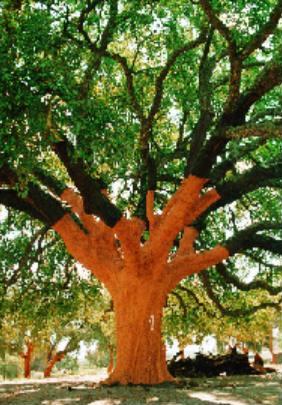
This tree has had some of its very thick cork removed from the trunk and from
the lower part of many of the large branches. Only about 50% of the cork is
removed during a harvest so that there is plenty of cork still on the tree to
protect it. The orangish color that can be seen is that of the cork. Notice that
the cork has also been removed from other trees in the background.
When a tree is 25 years old, the cork is harvested from it for the first time.
Every nine years after that, the cork is removed entirely by hand. A cut is made
into the cork with a sharp knife, and pieces about 1' x 3' in size are removed.
They must be stacked and aged outdoors for 3-6 months before being used.
One tree in Portugal (next to Spain in Europe), has had its cork removed every
nine years since 1820. At the tree's present size, about 100,000 wine bottle
corks are made from the cork that is removed. Usually, only about 4,000 corks
can be made from the cork of one tree.
[Close-up]
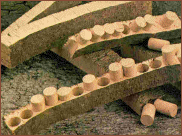
Corks for wine bottles are usually made from cork. The photo shows wine bottle corks that
have been cut out of strips of cork from the Cork Oak.
[S]
The leftover cork is not discarded. It is ground into cork granules that are then baked or cooked at a high temperature. The resins in the cork bond the particles together. This material has various uses such as in flooring and in cork bulletin boards that are used in offices and schools.


Cork Bulletin Board [S] Close-up of cork granules [S]
--------------------------------------------------------------------------------------------
Visitors since 30
Dec 2006
Go to the HOME page